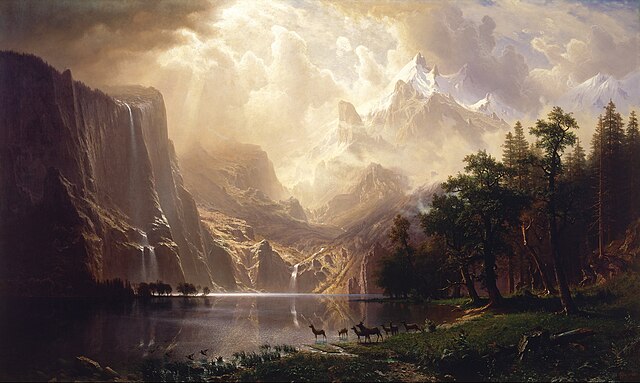Albert Bierstadt was a German American painter best known for his lavish, sweeping landscapes of the American West. He joined several journeys of the Westward Expansion to paint the scenes. He was not the first artist to record the sites, but he was the foremost painter of them for the remainder of the 19th century.
Portrait by Napoleon Sarony, c. 1870
Among the Sierra Nevada, California, 1868, Smithsonian American Art Museum, Washington, D.C.
Rocky Mountain Landscape, 1870, White House, Washington, D.C.
The Last of the Buffalo (1888), National Gallery of Art, Washington, D.C.
The Hudson River School was a mid-19th-century American art movement embodied by a group of landscape painters whose aesthetic vision was influenced by Romanticism. Early on, the paintings typically depicted the Hudson River Valley and the surrounding area, including the Catskill, Adirondack, and White Mountains.
Thomas Cole (1801–1848), The Oxbow, View from Mount Holyoke, Northampton, Massachusetts, after a Thunderstorm (1836), Metropolitan Museum of Art
Thomas Cole, A View of the Two Lakes and Mountain House, Catskill Mountains, Morning, 1844, Brooklyn Museum of Art
Frederic Edwin Church, Niagara Falls, 1857, Corcoran Gallery of Art, Washington, D.C.
Albert Bierstadt, Among the Sierra Nevada, California, 1868, Smithsonian American Art Museum, Washington, D.C.







